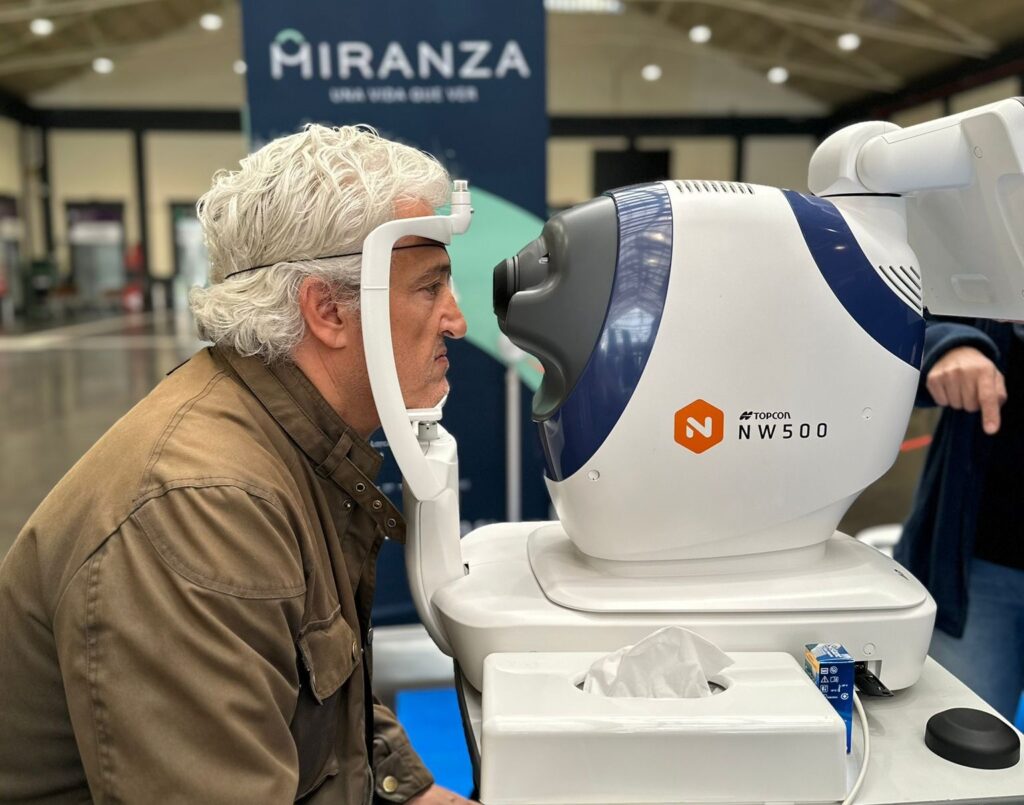
14% of those examined in the Miranza glaucoma prevention campaign have ocular hypertension, the main risk factor of the disease
Among those affected are people with refractive defects (70%), the elderly (33% + 60) and those with a family history (25%), which are other glaucoma-prone factors
A total of 60 of the 470 patients examined in the glaucoma prevention campaign conducted recently by Miranza as part of World Glaucoma Week taking place from 10 to 16 March had ocular hypertension, the main risk factor in the development of glaucoma.
Miranza specialists recommend these people see their ophthalmologist as soon as possible and then ensure frequent follow-ups, as their levels of intraocular pressure (IOP) are over 20 millimetres of mercury, which is above what is considered “normal” in a healthy eye and which could threaten the optic nerve and, as a result, the eyesight.
According to the data gathered from the campaign, with fourteen free screening points around six Spanish regions and Andorra, 70% of those with high intraocular pressure (IOP) have some kind of refractive defect. This is not surprising if you consider that high myopia or hyperopia cause a predisposition to glaucoma. Age, another of the risk factors of the disease, was also a common denominator in 33% of patients with high IOP, who were over 60 years of age (along with 41% who were between 40 and 60). 25% of those with hypertension also have a family history of glaucoma, another key piece of data that must be considered when preventing the disease, which has a significant hereditary factor. Furthermore, 25% of patients with above-average levels of IOP have previously had some kind of eye surgery, which is another risk factor to consider. In terms of the gender of patients with high IOP, 57% are women and 43% men. Although there have been more cases of women at risk than men in this campaign, Miranza specialists indicate that glaucoma affects both sexes indifferently.

What is IOP and how does it affect one’s eyesight?
Intraocular pressure is the pressure of the fluid inside the eye (aqueous humour) and is not related in any way to blood pressure. In general, between 10 and 20 millimetres of mercury (mmHg) is considered normal eye pressure. Exceeding these levels is the main risk factor of glaucoma and the only one for which there are currently treatments to attempt to lower it or keep it stable, thus avoiding vision loss linked to damage to the optic nerve. The destruction of fibres in this nerve that connects the eye to the brain causes irreversible vision loss, which could lead to glaucoma if IOP levels are not controlled.
Although there are some forms of glaucoma in which the pressure is at normal levels, most are directly related to this factor and, furthermore, it is the only one for which existing medical and surgical treatments can have an effect. The glaucoma prevention campaign conducted by Miranza has therefore focused on measuring IOP, with screenings carried out in Alicante, Algeciras, Barcelona, Bilbao, Madrid, Malaga, Manresa, Palma de Mallorca, Santa Cruz de Tenerife and Seville, as well as in Andorra.